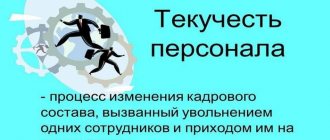The essence of the OSNO, USN, UTII modes
OSNO is a generally established taxation system to which almost the entire Tax Code of the Russian Federation is dedicated. Using this system, if there is an appropriate object of taxation, the taxpayer must pay all taxes in force on the territory of Russia.
At the request of the taxpayer, the Tax Code of the Russian Federation allows the use of special tax regimes, which can either replace OSNO or be used along with it. Such special regimes, in particular, include the simplified tax system and UTII, which are widespread in small and medium-sized businesses.
The simplified tax system can only be used instead of OSNO, and UTII can either replace OSNO or simplified tax system, or be used in conjunction with each of these modes.
Despite a number of similarities, the essence of the special regimes of the simplified tax system and UTII is fundamentally different. The simplified tax system is a simplified version of the OSNO, which, subject to the restrictions established by law, can be used by small organizations and individual entrepreneurs for any type of activity. UTII is applicable only to certain types of activities of companies and individual entrepreneurs, but it almost does not depend on the scale of this activity.
When both special regimes are applied, instead of the 3 taxes obligatory for payment on OSNO (profit, property and VAT), 1 tax (single) is paid. Although in some cases, along with this tax, there may also be a need to make payments for the taxes it replaces.
The algorithms for calculating this single tax under the simplified tax system and UTII are also completely different. Payment of other taxes and insurance contributions for the simplified taxation system and UTII systems, if there is an object of taxation, is just as mandatory as for the OSNO.
When applying all 3 taxation systems, firms are required to maintain accounting and prepare financial statements. SMP can do this using simplified options. Individual entrepreneurs are exempt from accounting and submission of accounting reports.
Both companies and individual entrepreneurs must keep tax records using OSNO and the simplified tax system.
With all options for combining modes, it is necessary to organize separate accounting and tax accounting.
General taxation regime (GRT) ↑
The use of a general taxation regime is associated with a large number of different features.
In order not to experience difficulties with accounting, the official involved in it should understand in detail the following issues:
- essential elements;
- operating principles;
- taxes paid.
Essential elements
The most important elements when using ORN are the following:
| Unit of taxation | This could be money, land, goods or other valuable property |
| The tax base | Any characteristic of the object of taxation, it can be cost or other |
| Tax rate | Amount of charges per unit of tax base |
| Tax benefits | Various benefits provided by the state to certain categories of taxpayers on the basis of current legislation |
Tax benefits applied under ORN include targeted deductions, withdrawal of any object from the taxation scheme.
Moreover, the number of these benefits is strictly limited and their use is possible only under certain conditions. Since the regime in question was initially designed for fairly financially strong organizations.
The following may be subject to taxation:
| Property | Real estate, securities and other income-generating |
| Product | Property of any type intended for sale |
| Income | Financial benefit, in any form (monetary, material) |
| Service | Something that has no material expression, but is sold in the same way as a product |
| Job | Any activity the result of which has a material expression |
Operating principles
The general taxation regime itself is a set of various rules, norms and laws that regulate the procedure for paying various fees in favor of the state and regional budget.
Video: which tax system should small and medium-sized businesses choose?
ORN obliges the enterprise using it to pay a certain list of taxes, for which fixed rates are established. The general tax regime has a very important feature.
It can be used simultaneously with UTII. The use of ORN obliges the taxpayer to prepare the following documents when submitting reports:
| Average number of employees | Annually |
| Form No. 6 | Reporting on the intended use of funds is compiled annually |
| Form No. 1 | Balance provided annually |
| Form No. 2 | Profit report |
| Form No. 3 | Denotes changes in capital |
| Form No. 4 | Represents a report on the direction of funds |
| Form No. 5 | Appendix to the balance sheet (accounting) |
It is also necessary to pay maximum close attention to accounting, since its volume is quite large. The presence of errors can lead to quite serious troubles.
A company using ORN must be a VAT payer. Moreover, for an organization paying value added tax, the use of the regime in question is preferable.
Since the ORN is, first of all, intended specifically for VAT accounting. There is also another very important advantage of ORN. If for some reason there is no profit at all, then the organization has the right not to pay tax on it.
This is especially important for very large enterprises in which losses are measured in very large amounts.
Taxes paid
Those using the tax regime in question are required to pay almost all possible taxes imposed on the enterprise.
This list includes the following:
- VAT – value added tax.
- Tax on property owned by an organization.
- Personal income tax is a tax on personal income; the enterprise is a tax agent.
- Corporate income tax (an exception is made for individual entrepreneurs).
All taxes that organizations operating under the general regime are required to pay can be divided into three main groups:
- federal;
- regional;
- local.
Find out which taxation system an individual entrepreneur can apply from the article: taxation system for individual entrepreneurs.
All about the tax system.
How to correctly issue a 1-NDFL certificate.
The full list of federal taxes is listed in Article No. 13 of the Tax Code of the Russian Federation. These include:
- VAT;
- National tax;
- water tax;
- income tax and mineral extraction tax;
- Personal income tax.
Regional taxes are listed in Article No. 14 of the Tax Code of the Russian Federation:
- property tax;
- transport tax.
All local taxes are listed in Article No. 15 of the Tax Code of the Russian Federation:
- property tax for individuals;
- land tax.
Rates for all taxes, regardless of their type, are fixed:
| VAT | 18% |
| At a profit | 20% |
| For property | 2.2% |
| Personal income tax | 13% |
We should not forget that an enterprise using ORN is obliged to make all appropriate contributions to extra-budgetary state funds (PFR, compulsory medical insurance and others).
It is important to remember that the use of the general regime is associated with a large number of different nuances.
That is why it is necessary to study the legislative framework as carefully as possible before making the transition to it.
This will avoid the occurrence of various errors and all kinds of controversial situations.
Previous article: Sample certificate of the applicable taxation system Next article: Find out the taxation system by TIN
Today in Russia there are five tax regimes:
- General taxation system (OSNO)
- Simplified taxation system (STS)
- Unified tax on imputed income (UTII)
- Patent tax system (PTS)
- Unified Agricultural Tax (USAT)
Let's figure out what their features are.
OSNO (general taxation system)
This is the most complex (and usually the most unfavorable) tax regime, for which all entrepreneurs and organizations are registered by default, unless they have applied to switch to another one. It covers all major taxes:
- VAT
- property tax
- tax on personal income for individual entrepreneurs (13%) / on corporate profits for LLCs (20%)
- payments for employees (personal income tax and all kinds of social insurance contributions)
If you suddenly decide to switch from this system to another, keep in mind that this can only be done starting in the new year by submitting an application in advance - from October 1 to November 31.
STS (simplified taxation system)
Under this taxation system, individual entrepreneurs do not pay personal income tax (NDFL), personal property tax (used in business activities) and VAT (with one exception: when importing goods into Russia from abroad, you will still have to pay VAT). LLCs are also exempt from VAT, corporate property tax, and corporate profit tax (with the exception of dividend income tax). There are two types of simplified tax system: with the first - let's call it “income” - the entrepreneur pays a tax equal to 6% of income, with the second - “income minus expenses” - 5-15% (depending on the region) of profit, with differences in rates for individual entrepreneurs and LLCs no. It will be more profitable to use the simplified tax system “income” form if your expenses are small (up to 50-60%). This is usually relevant for entrepreneurs and organizations that are engaged in providing services, it is better to use it if your expenses amount to more than 60% of total income, and usually this form of simplified tax system is used for sales. The simplified taxation system (STS) is one of the most popular, since its application conditions are quite suitable for many types of business:
- annual income – no more than 60 million rubles in 2020;
- number of employees – no more than 100 people;
- cost of fixed assets – no more than 100 million rubles.
UTII (single tax on imputed income)
The amount of this tax depends on several factors that reflect the size of your business, such as the area of premises used and the number of employees. These factors are different for each type of activity, but here’s what is the same: the amount of tax does not depend on your actual income, it is fixed and the same for both individual entrepreneurs and LLCs. Another nice addition: the amount of UTII can be reduced by insurance contributions. Thus, individual entrepreneurs who have employees can reduce the tax amount to 50%, those who do not have employees - by the amount of contributions for themselves (without limitation). This tax is paid once a quarter. The main feature of this type of taxation is that it can only be applied to a limited list of activities. In this regard, UTII can be combined with OSNO or simplified tax system. Please note that the conditions for switching to “imputation”, as well as its features, may differ significantly, so check all the information with the tax office in your region.
PSNO (patent taxation system) can only be used by individual entrepreneurs
This system is in many ways similar to UTII: it can only be used for activities from a limited list, the amount of tax does not depend on income and it can be combined with OSNO or simplified tax system. Why is this system called “patent”? The fact is that you buy this same patent for a period of one to twelve months within a calendar year, thereby replacing the payment of taxes on this type of activity. The “cost” of a patent will be 6% of your potential income, which is formed depending on various factors. There are some restrictions for entrepreneurs using the patent system: they cannot employ more than 15 workers, and their annual income must not exceed 60 million rubles.
Unified agricultural tax (unified agricultural tax)
This type of taxation is relevant only for those entrepreneurs or organizations that are independently engaged in the cultivation, processing and sale of agricultural products (for example, for farmers). The main differences in taxation between LLCs and individual entrepreneurs: 1. Payments for employees for individual entrepreneurs and LLCs are the same, all employers are required to pay:
- Personal income tax (NDFL) – 13% of the employee’s salary (i.e. he will receive an amount less than 13%).
- Payments for social insurance: to the Pension Fund, the Federal Compulsory Medical Insurance Fund and the Social Insurance Fund.
2. Individual entrepreneurs (unlike an LLC) are required to pay all of the above for themselves (however, do not forget that in an LLC you yourself will be considered an employee, which means you will also have to make deductions). 3. The personal income tax (also known as personal income tax) is higher for LLCs than for individual entrepreneurs: 20% versus 13%. 4. An LLC does not have the right to use the patent taxation system.
Operating principles on OSNO
The application of OSNO is based on the following principles:
- this system is applied by the taxpayer (company or individual entrepreneur) without fail, unless he has expressed a desire to apply a different regime (special regime) agreed with the Federal Tax Service;
- There are no restrictions on the use of OSNO;
- OSNO includes the provisions of all chapters of the Tax Code of the Russian Federation, with the exception of those devoted to special regimes;
- calculation of taxes paid under OSNO is carried out in the manner established in the relevant chapters of the Tax Code of the Russian Federation, at rates adopted depending on the status of the tax at the federal, regional or local level;
- when calculating taxes, you can take advantage of exemptions and benefits valid for the relevant taxes, if there are grounds for this;
- tax reporting and payment are made within the deadlines specified in the Tax Code of the Russian Federation, unless these deadlines are adjusted at the local or regional level.
For information about the parameters that are important when choosing the system to use, read the article “Choosing a taxation system for an LLC in 2018.”
Unified agricultural tax
The legislation of the Russian Federation may provide for special taxation regimes for entrepreneurs operating in specific segments. For example, for farmers who can take advantage of the opportunity to settle accounts with the state by paying the unified agricultural tax or Unified Agricultural Tax. Agricultural producers who choose this taxation scheme are exempt from the need to pay:
- income tax;
- VAT;
- property tax.
If a farmer is registered as an individual entrepreneur, then he does not have to pay personal income tax or property tax for individuals. Just as in the case of the simplified tax system, payers of the unified agricultural tax must fulfill the obligations stipulated by law for tax agents.
Features of working on the simplified tax system
The distinctive features of the simplified tax system are as follows:
- The use of the simplified tax system is possible if the taxpayer meets a number of indicators that limit the possibility of using this system:
- number of staff;
- share of participation in the company of other legal entities;
- residual value of fixed assets;
- amount of income.
Read about the income limit under the simplified tax system in the material “Income limit when applying the simplified tax system .
- The tax base under the simplified tax system is chosen by the taxpayer himself. This can be either “income” or “income minus expenses”. Taxation is carried out at generally accepted rates (with the possibility of their reduction in the regions) 6% in the first case and 15% in the second.
How to choose an object of taxation, read the article “Which object under the simplified tax system is more profitable - “income” or “income minus expenses”?” .
- Income and expenses under the simplified tax system are accounted for on a cash basis and are recorded in the book of income and expenses, which is a tax register for this regime. However, not all expenses incurred can reduce the tax base.
For information on the requirements for expenses under the simplified tax system of 15%, read the article “Accounting for expenses under the simplified tax system with the object “income minus expenses”” .
- The tax, calculated at a rate of 15%, is limited to the minimum possible amount. This amount must be paid even if the results of the work result in a loss.
- The tax accrued at a rate of 6% can be reduced to 50% by firms and to 100% by individual entrepreneurs for the amount of insurance premiums actually paid and some other payments. An additional reduction is possible due to the amounts of the paid trade tax.
To learn how a trade fee affects the amount of tax under the simplified tax system, read the material “A trade fee can reduce the “simplified” tax by more than half.”
- The tax period under the simplified tax system is a year. The declaration is submitted to the Federal Tax Service once upon its expiration. In this case, advance tax payments are paid quarterly.
- Application of the simplified tax system is possible either from the beginning of the activities of a newly registered company or individual entrepreneur, or from the beginning of the next calendar year. If there are no grounds for loss of the right to use the simplified tax system, this system should be applied until the end of the calendar year. You can voluntarily change the regime or object of taxation only from the next tax period.
Read about the differences in the mandatory and voluntary procedures for changing the simplified tax system to another regime here.
Differences in the UTII regime
The UTII mode is characterized by the following features:
- Restrictions on its use are determined by such parameters as:
- Kind of activity;
- region of activity;
- number of employees;
- share of participation in the company of other legal entities;
- limits of physical indicators established for a number of activities.
- monthly basic profitability of the physical indicator of the corresponding type of activity;
- deflator coefficient;
- regional coefficient reflecting the conditions for carrying out activities in the region.
Read about the regional coefficient in this article.
The taxpayer's influence on the size of the tax base is limited to determining the actual value of the physical indicator and taking into account the reduction factor for partial months of application of UTII.
The monthly tax base is calculated as the product of all the listed indicators, and the quarterly tax base is calculated as the sum of 3 monthly base values.
Read more about the calculation of UTII here.
The tax is charged at the generally established rate of 15% of the quarterly base or at a lower rate established in the region. It does not depend in any way on the results of the taxpayer’s work and must be paid throughout the entire activity in this regime.
- As with the simplified tax system of 6%, it is possible to reduce the accrued tax by up to 50% for firms and up to 100% for individual entrepreneurs for the amount of insurance premiums actually paid and (for firms) some other payments.
Read about the innovations that appeared in this calculation in 2020 in the material “UTII: reduction in insurance premiums 2017.”
- The tax period for UTII is a quarter. Accordingly, the declaration is submitted to the Federal Tax Service quarterly, and tax payments are made quarterly.
- Application and refusal to use UTII is possible from any month of the year.
For information on how to notify the tax office of the termination of an “imputed” activity, read the article “UTII Form 3: application for deregistration of an organization.”
How to choose a tax system
When choosing a tax system, a taxpayer needs to evaluate a number of factors:
- the presence and limits of restrictions on the use of special regimes, as well as the risks of going beyond these restrictions during the tax period;
- the impact on the possibility of applying each regime of changes in legislation announced in the near future;
- the level of the share of taxes paid in the income received under each regime and the frequency of this income;
- possibilities for reducing the amount of tax charged under each regime and regulating this amount.
Recommendations for choosing a tax regime are also given in the articles:
- “How can an organization choose a tax regime: OSN, simplified tax system or UTII?”;
- “What is the difference between the simplified tax system and the OSNO? What is more profitable? ;
- “Which is better - simplified or imputed (USN or UTII)?”.
Taking into account all of the above factors, it is necessary to carry out forecast calculations of the performance of a company or individual entrepreneur in various modes in order to compare them. And only based on their results can we draw a conclusion about which system will be preferable.
In what cases is it beneficial to use OSNO?
This tax regime is beneficial for individual entrepreneurs and companies, mainly if the majority of their counterparties apply it in their activities. This is primarily due to input VAT. About a fifth of the revenue (output VAT) of such firms is a mandatory payment, which can be reduced by the amount of input tax. The larger its size, the lower the VAT liability to the budget.
The organization also increases the chance of winning a major contract. Certain types of activities (credit, pawnshop, insurance, etc.) can only be carried out by enterprises using OSNO.
When importing products from foreign countries during customs clearance, the cost of imported goods must be subject to VAT, and only companies and individual entrepreneurs on OSNO can offset this tax.
In addition, within the general regime, you can apply benefits established by law, which allow you to work almost on equal terms with other special systems, without observing certain restrictions (for example, number).
OSNO can be combined with some preferential regimes, and this in turn can optimize the taxation system in the company.
Results
The OSNO regime is mandatory for a taxpayer to use, unless he has chosen any of the special regimes, in which a certain group of taxes is replaced by 1 single tax.
The most widely used special modes are the simplified tax system and UTII, which have a number of similar restrictions on the possibility of their use, but differ significantly in other aspects of working with each of them. When choosing the optimal taxation system from them, you will have to conduct a comparative analysis of a number of comparable indicators for each of the regimes. You can find more complete information on the topic in ConsultantPlus. Full and free access to the system for 2 days.










